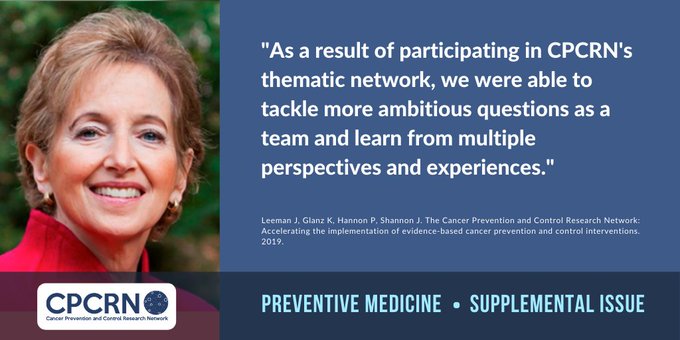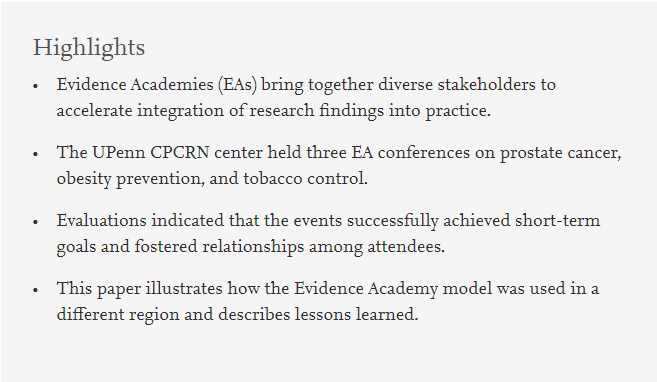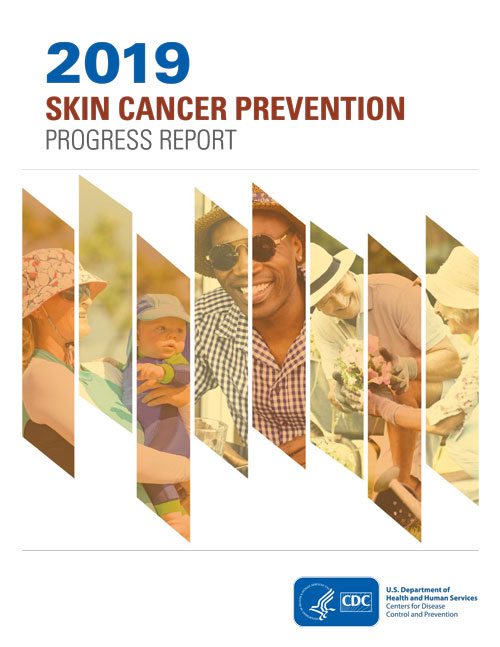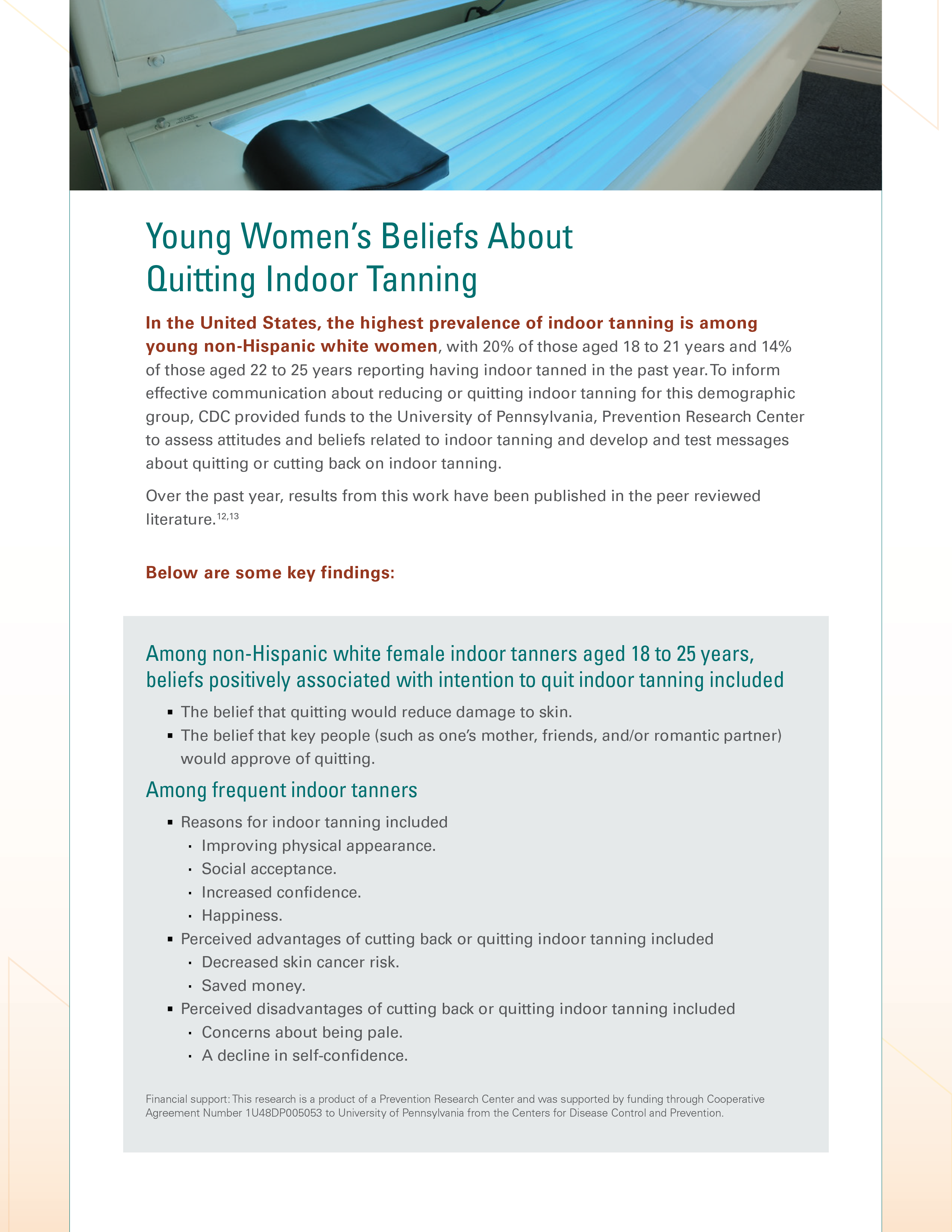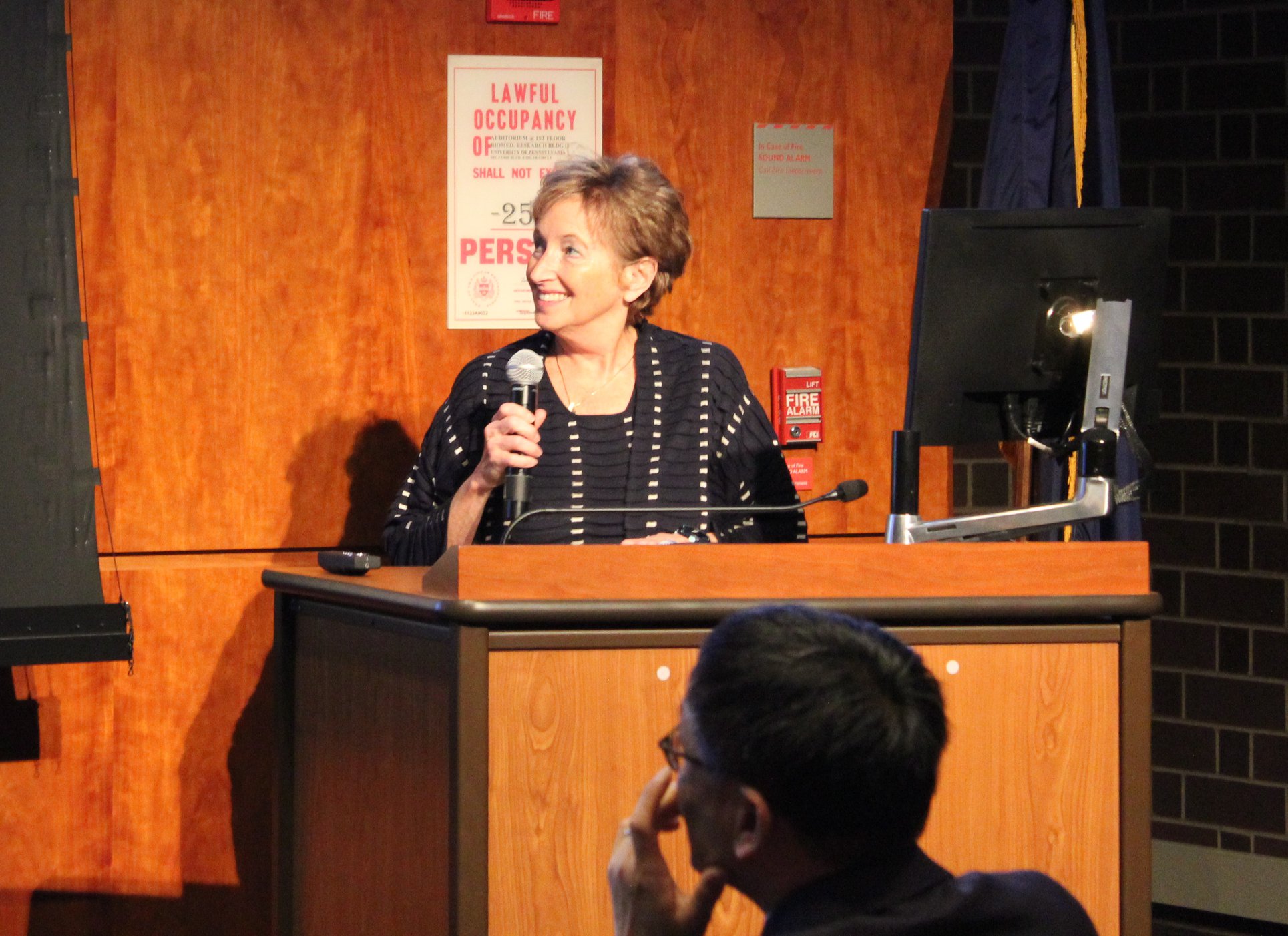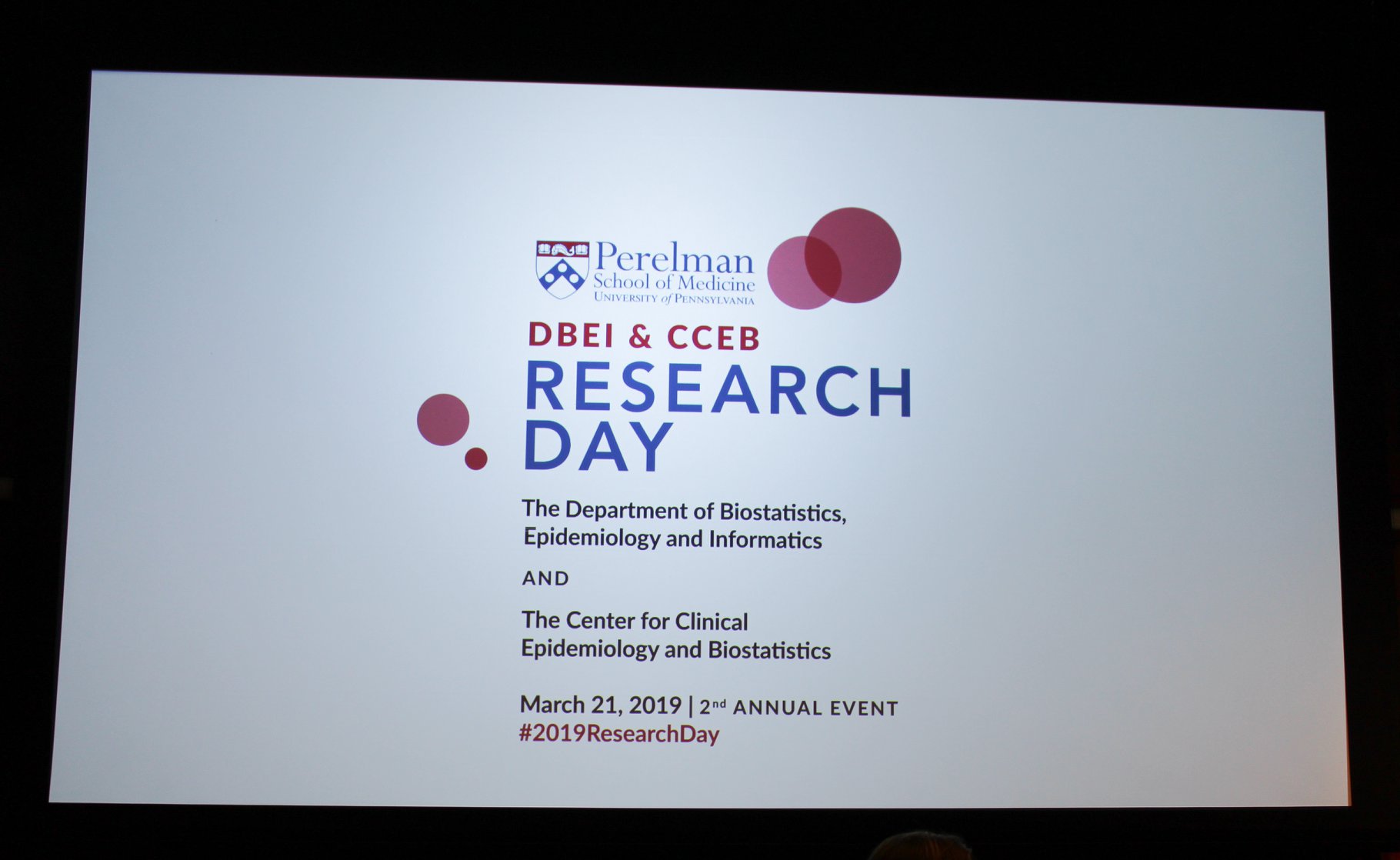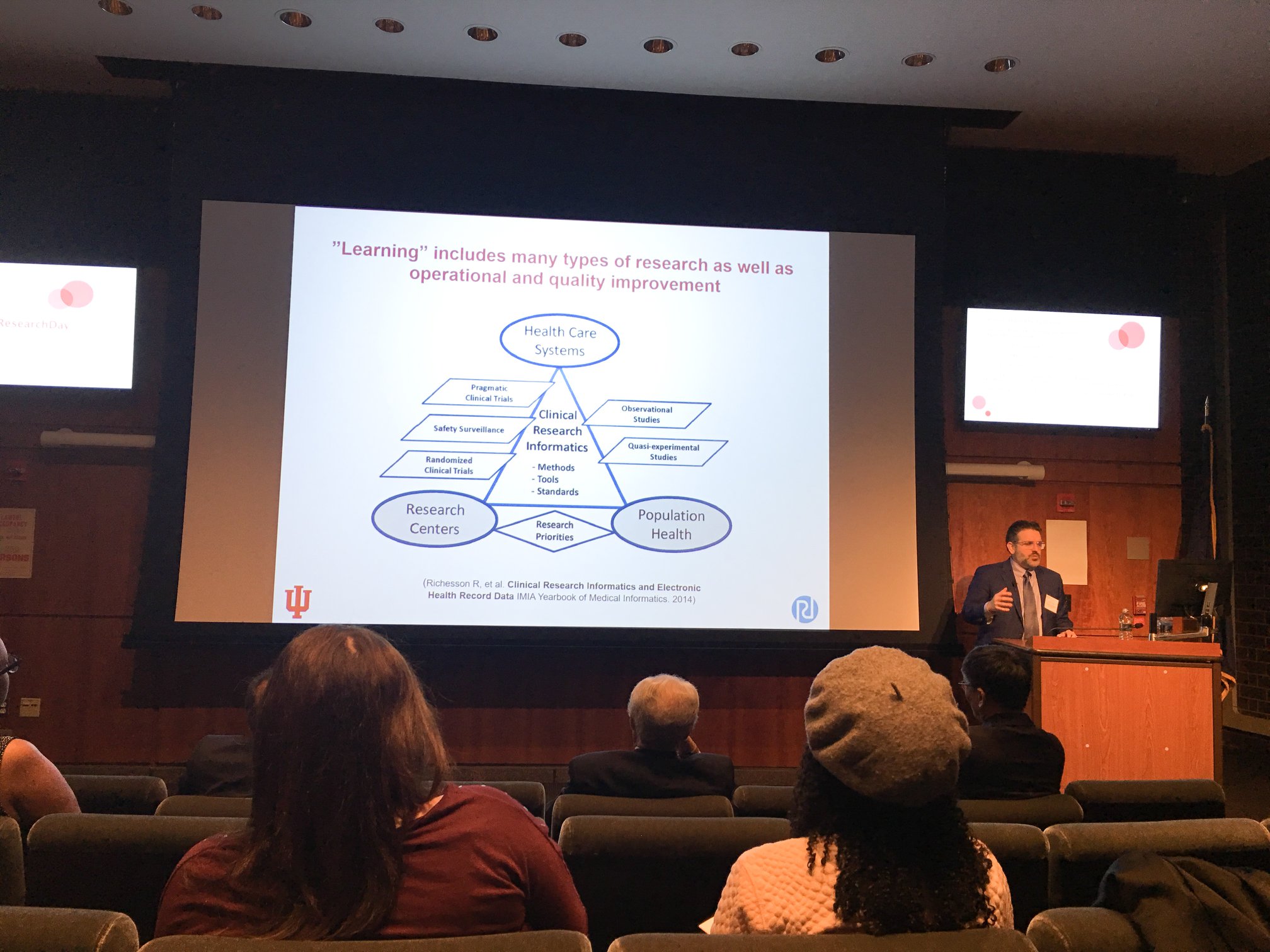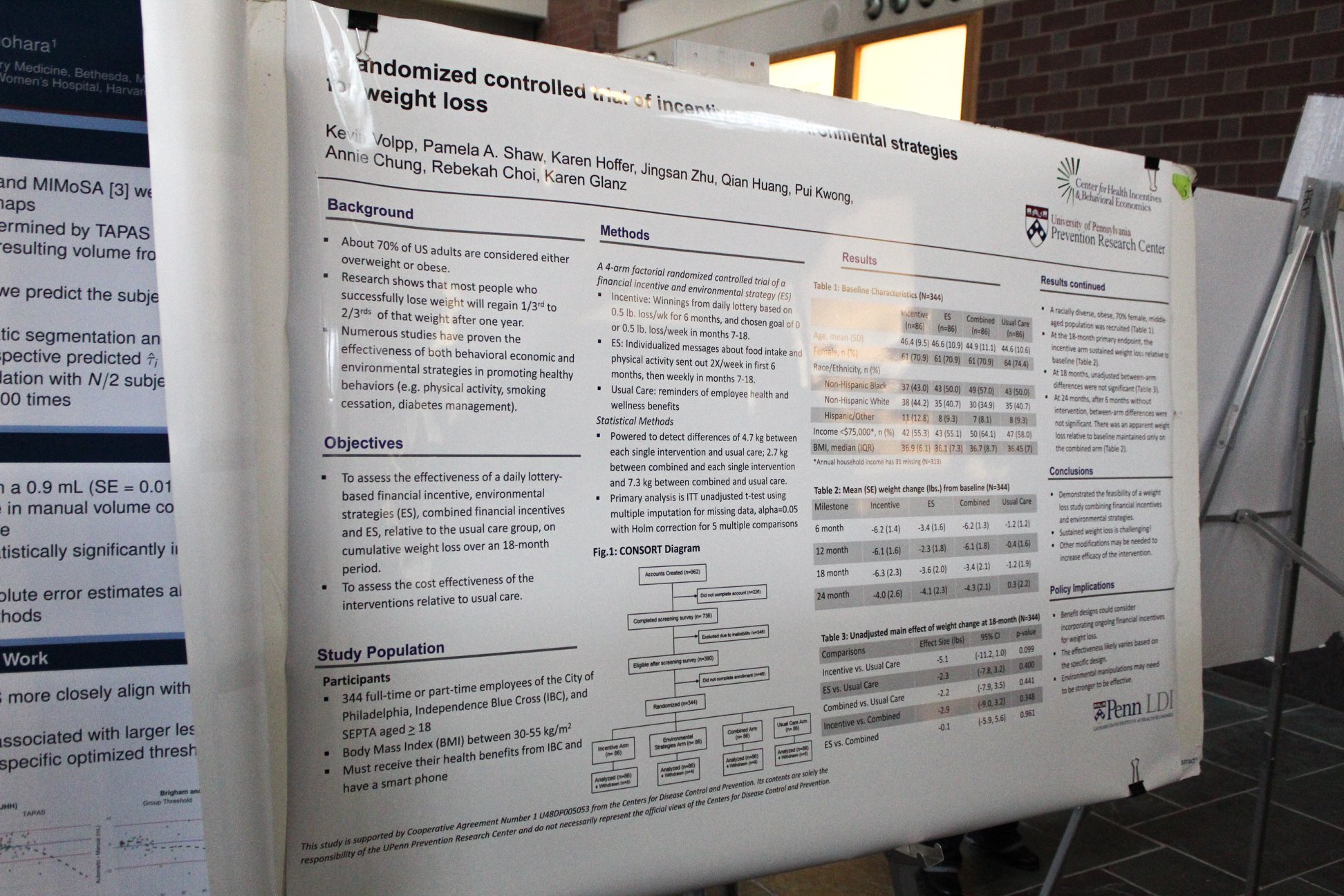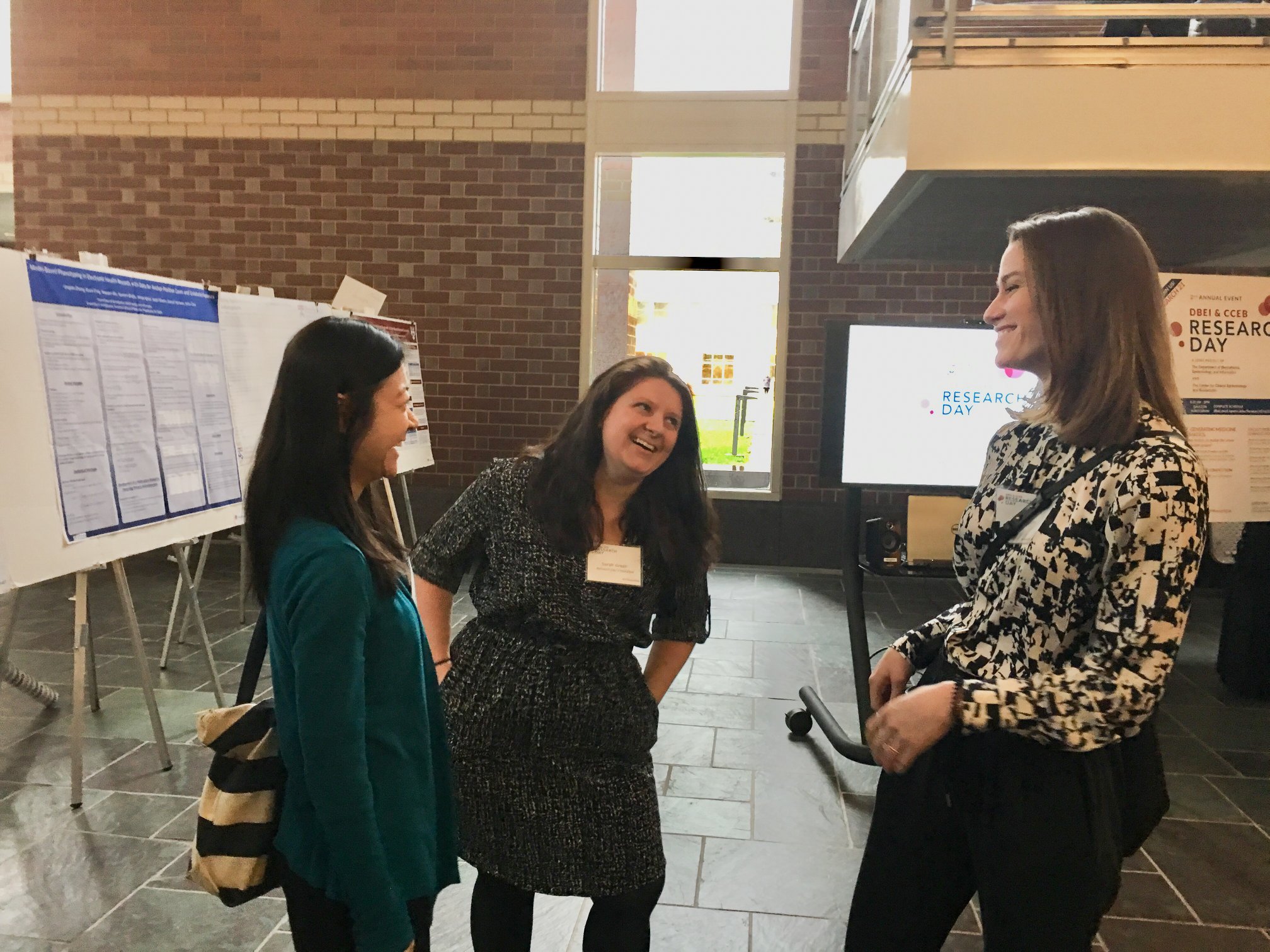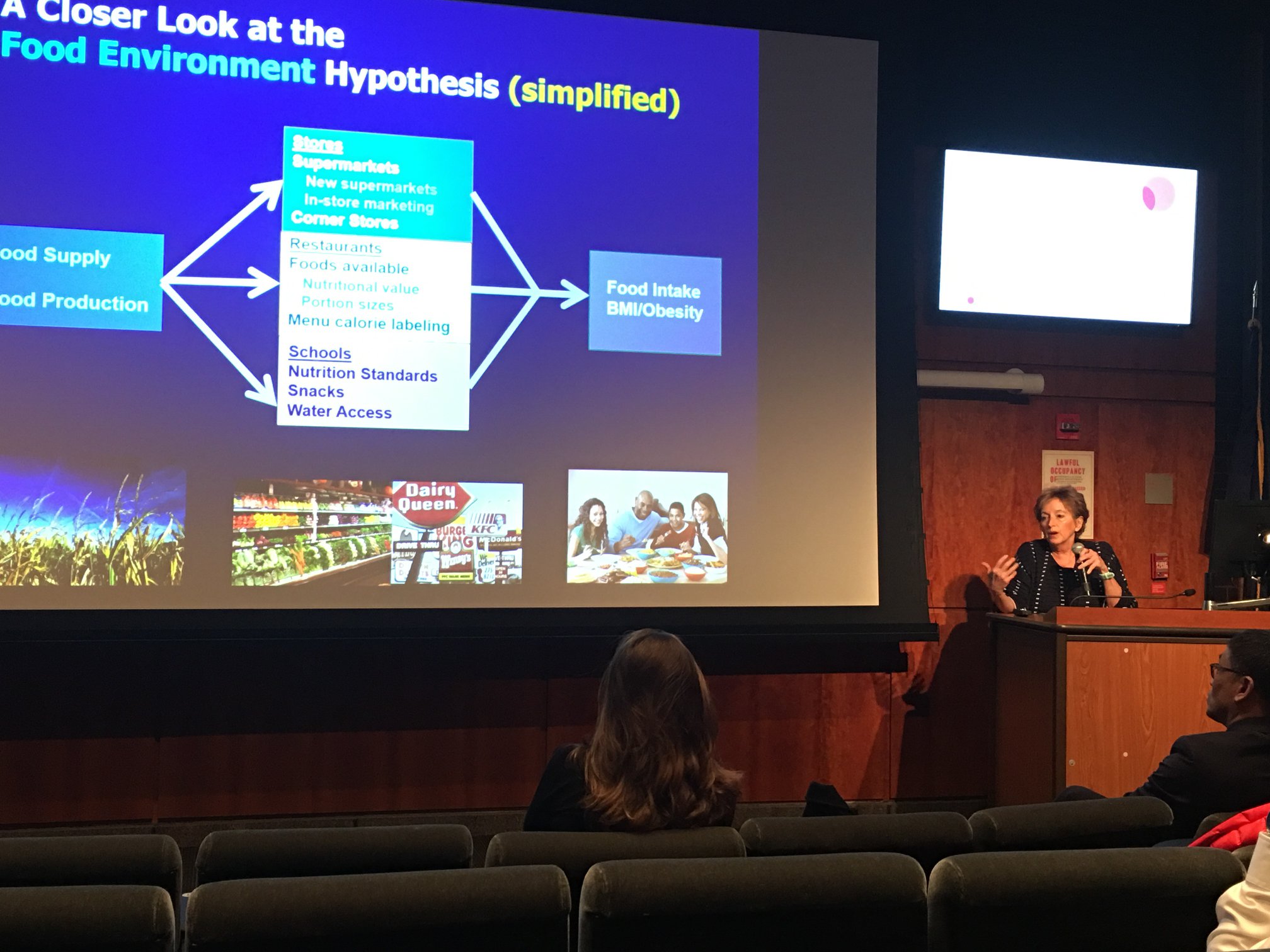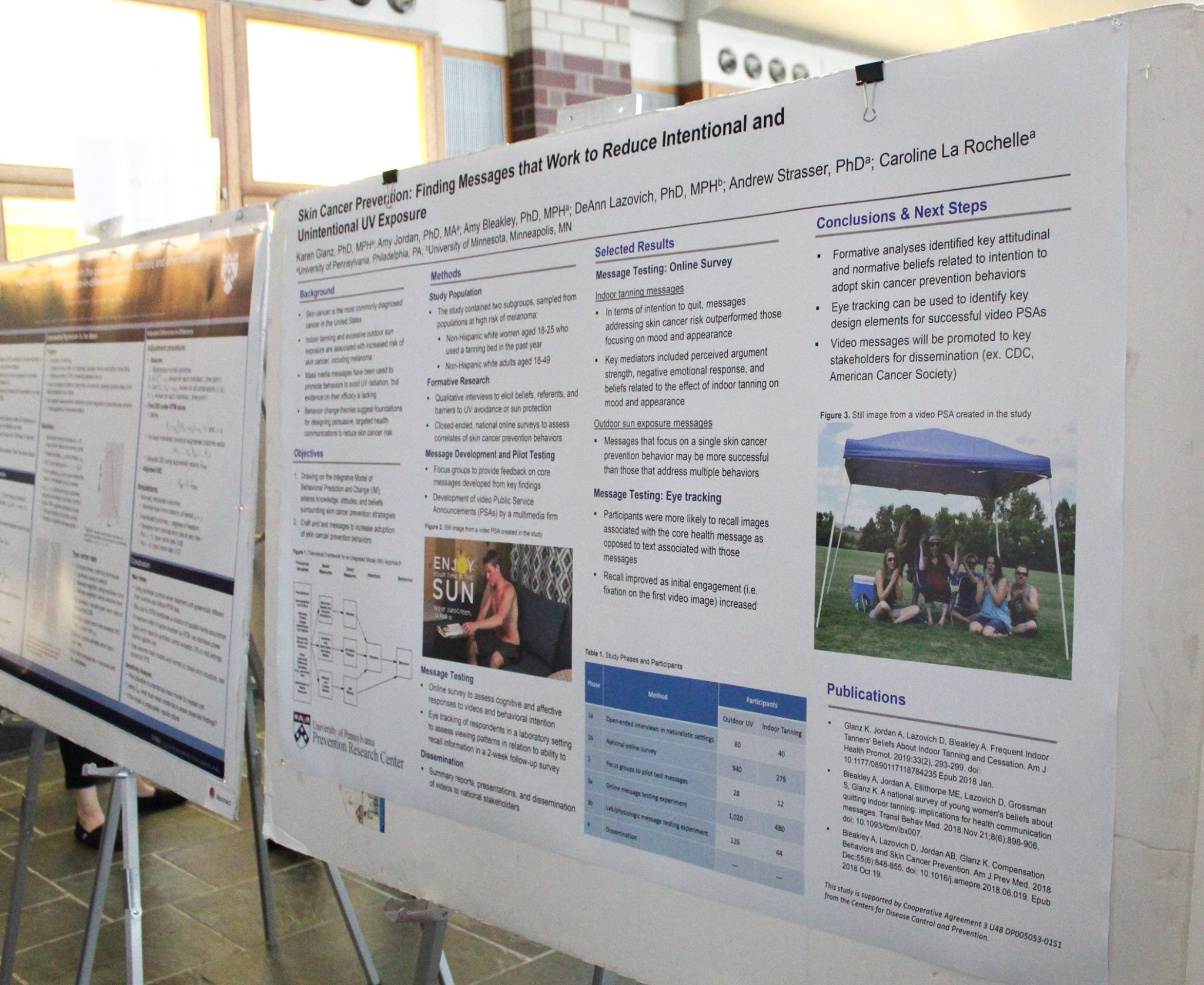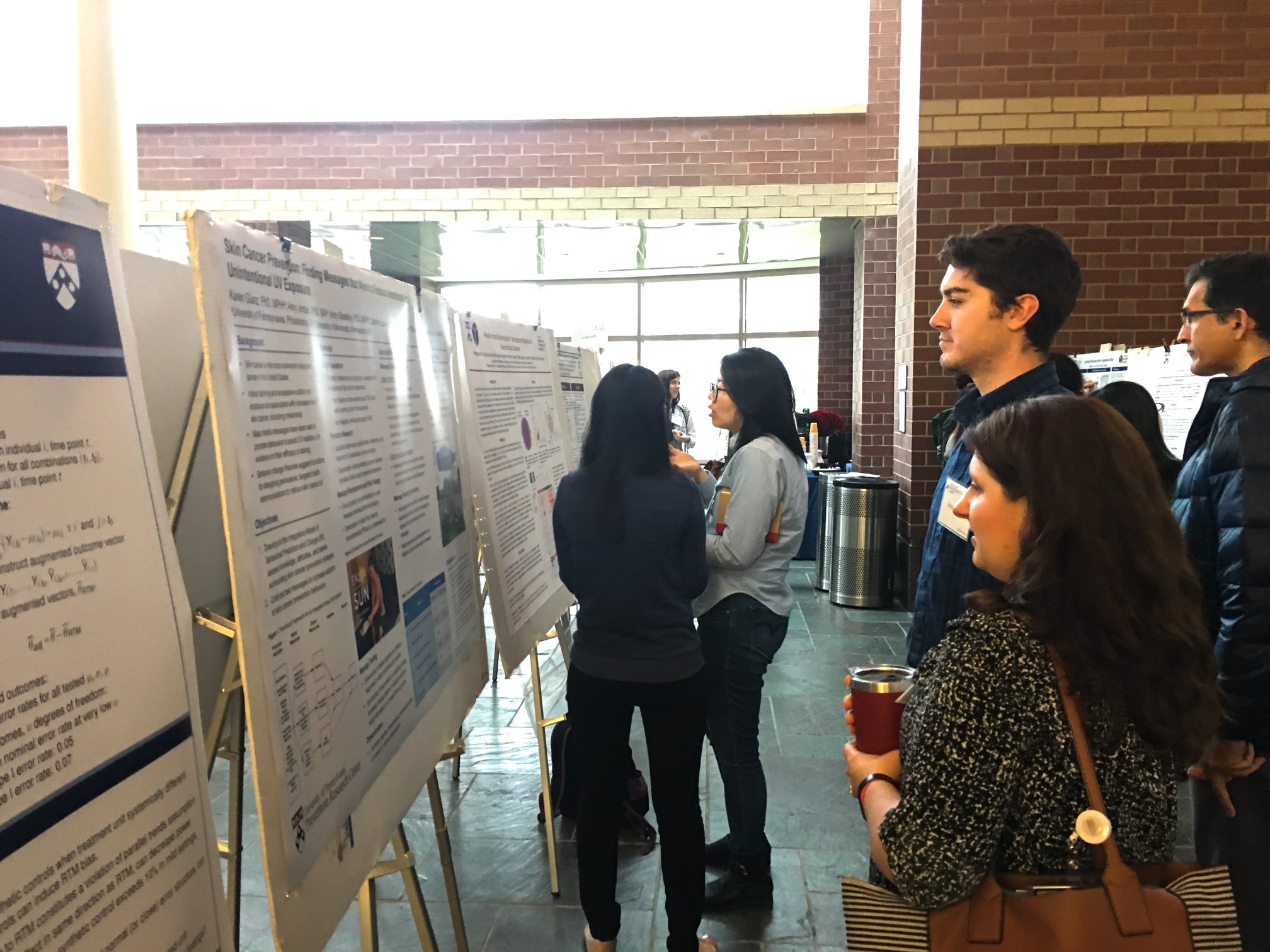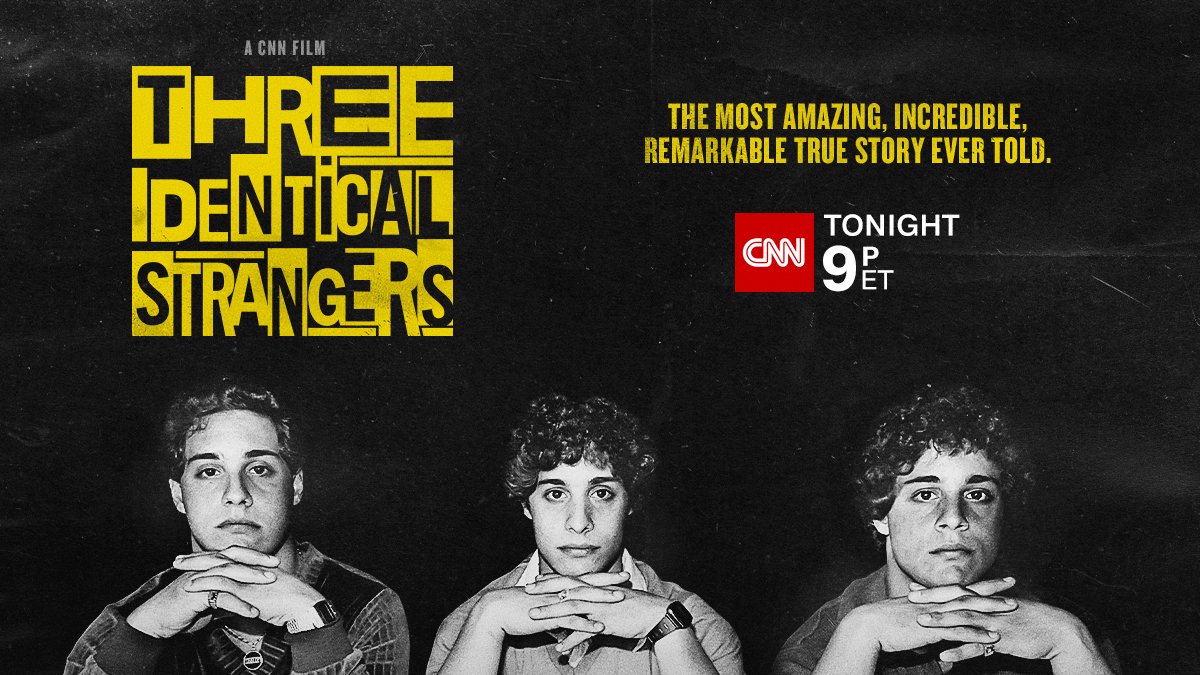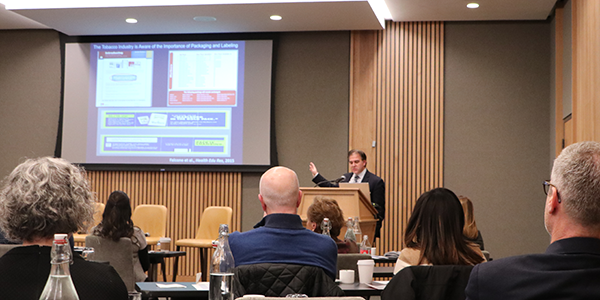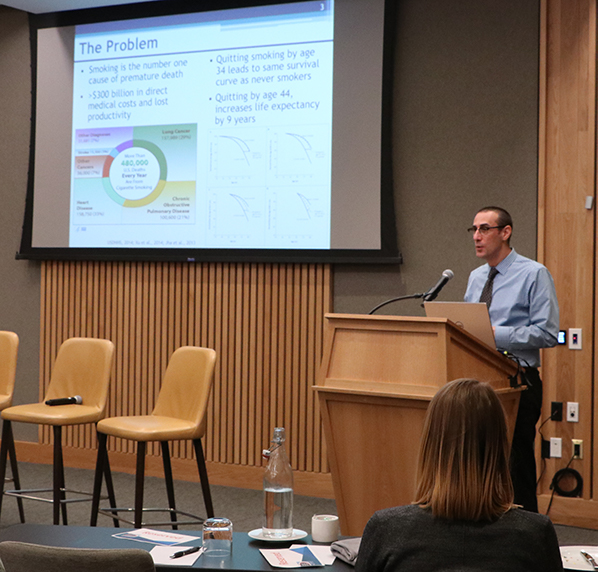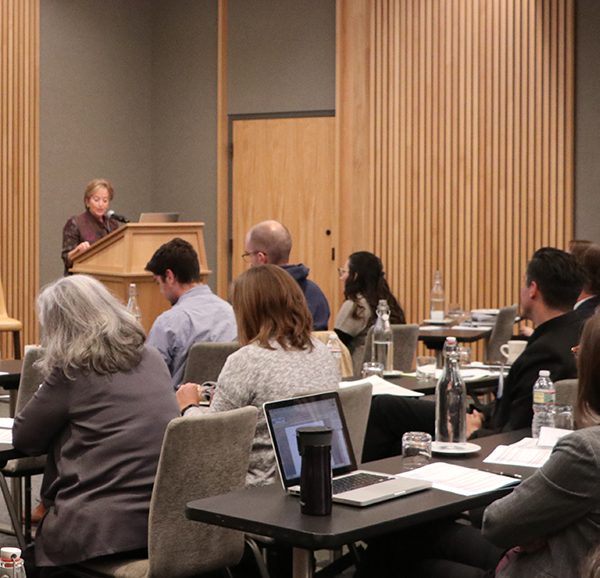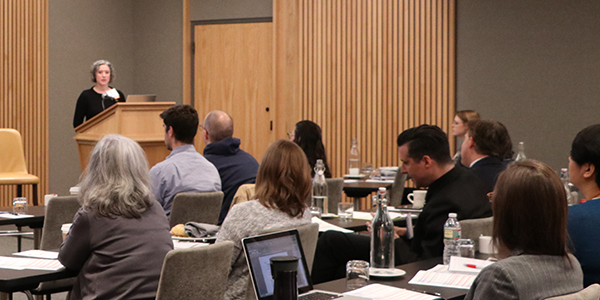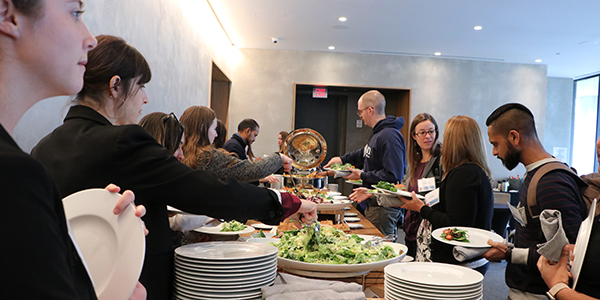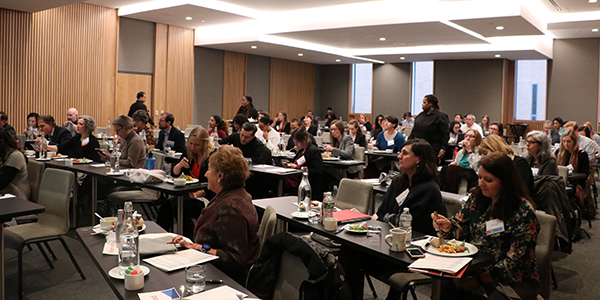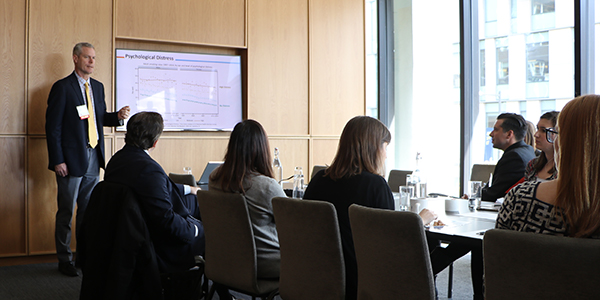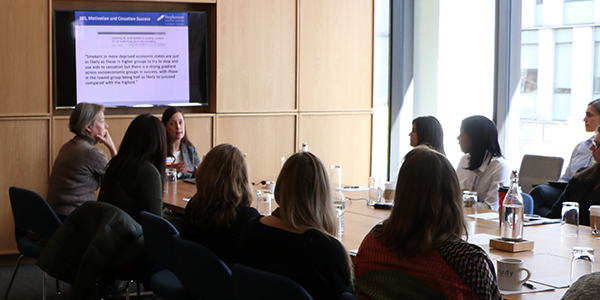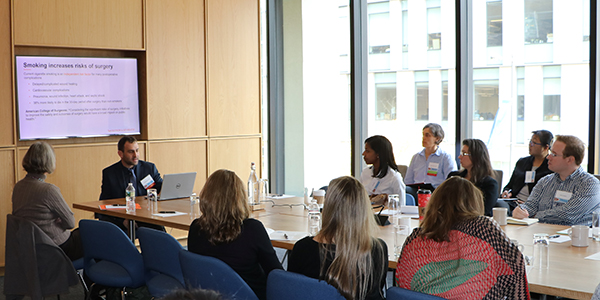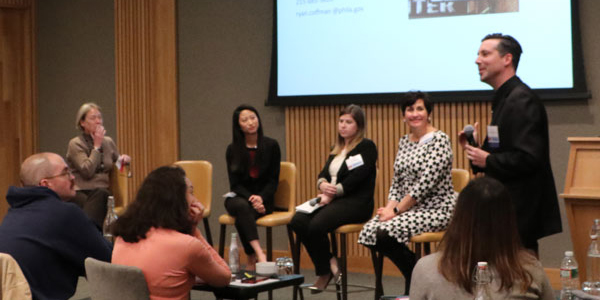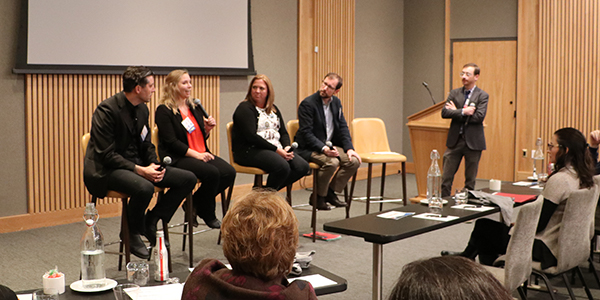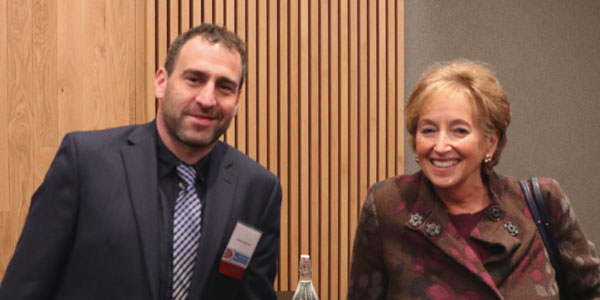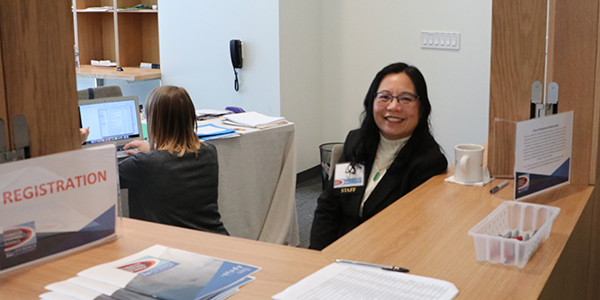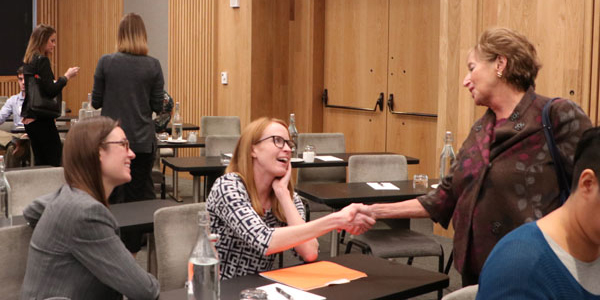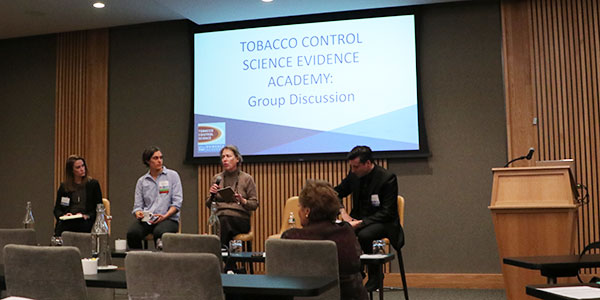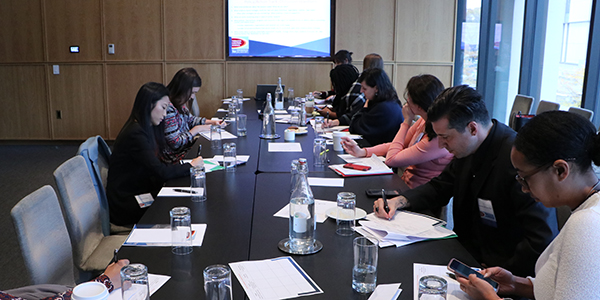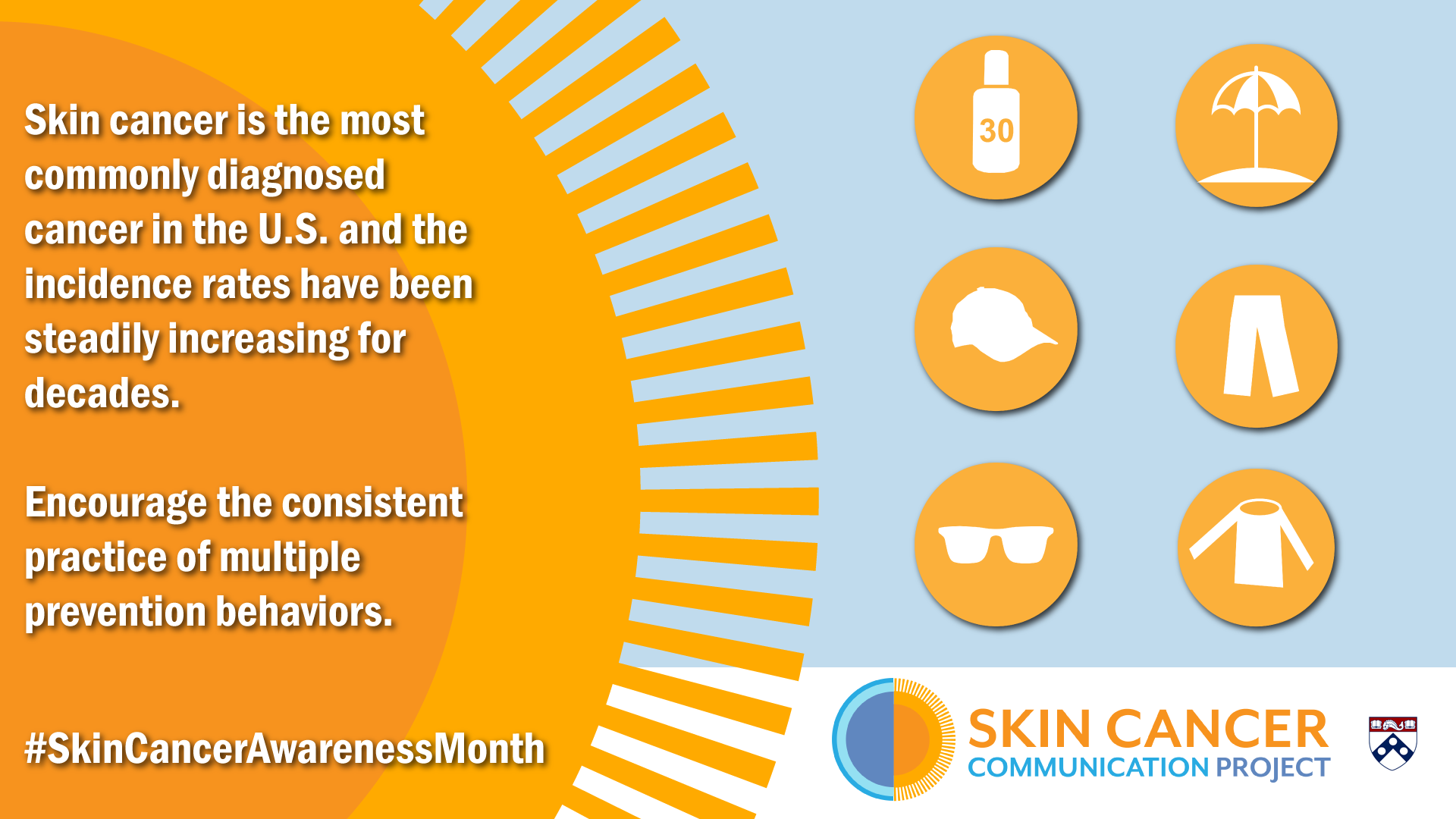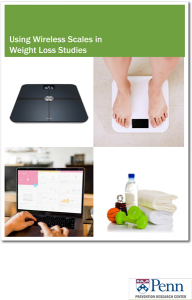UPenn PRC helps to accelerate implementation of evidence-based cancer prevention and control
Accelerate progress
The Evidence Academy model was developed to bring together researchers, health professionals, advocates, and policy makers to accelerate the process of integrating research findings into practice.
Bringing in the experts
The University of Pennsylvania Collaborating Center of the Cancer Prevention and Control Research Network (CPCRN) assembled local and national experts in three different Evidence Academies (EAs) on the UPenn campus from 2015 to 2018.
The EAs were used to present research and discuss barriers and solutions to topics that affect the health of our communities. As a result, an article describing three evidence academies and the lessons learned was just published in the journal Preventive Medicine.
The Topics
The focus of the Evidence Academies were:
Prostate cancer (2015)
Food access, diet and obesity (2017)
Tobacco control science (2018)
The paper on these EAs is a part of a special supplemental issue, produced by the CPCRN which is funded by the CDC’s Division of Cancer Prevention and Control and the National Cancer Institute.
The goal of the network is to reduce the impact of cancers that affects all communities, by connecting public health practitioners, policymakers, and others to the research and strategies found to be most effective. Twelve articles come from centers across the United States linked by a common cause, “reducing cancer burden in diverse populations.”
- Read the UPenn PRC paper here.
Putting Evidence Academies into action: Prostate cancer, nutrition, and tobacco control science. Glanz K, Green S, Avelis J, Melvin CL. - Read more about the CPCRN Supplemental Issue here.
- Read the full Supplemental Issue of Preventive Medicine here.*
- Dr. Glanz contributed to the following papers in the supplemental issue:
The cancer prevention and control research network: Accelerating the implementation of evidence-based cancer prevention and control interventions (Guest Editor Commentary). Leeman J, Glanz K, Hannon P, Shannon J.
An application of the Science Impact Framework to the Cancer Prevention and Control Research Network from 2014-2018. Ko LK, Jang SH, Friedman DB, Glanz K, Leeman J, Hannon PA, Shannon J, Cole A, Williams R, Vu T.
*This issue is open access


